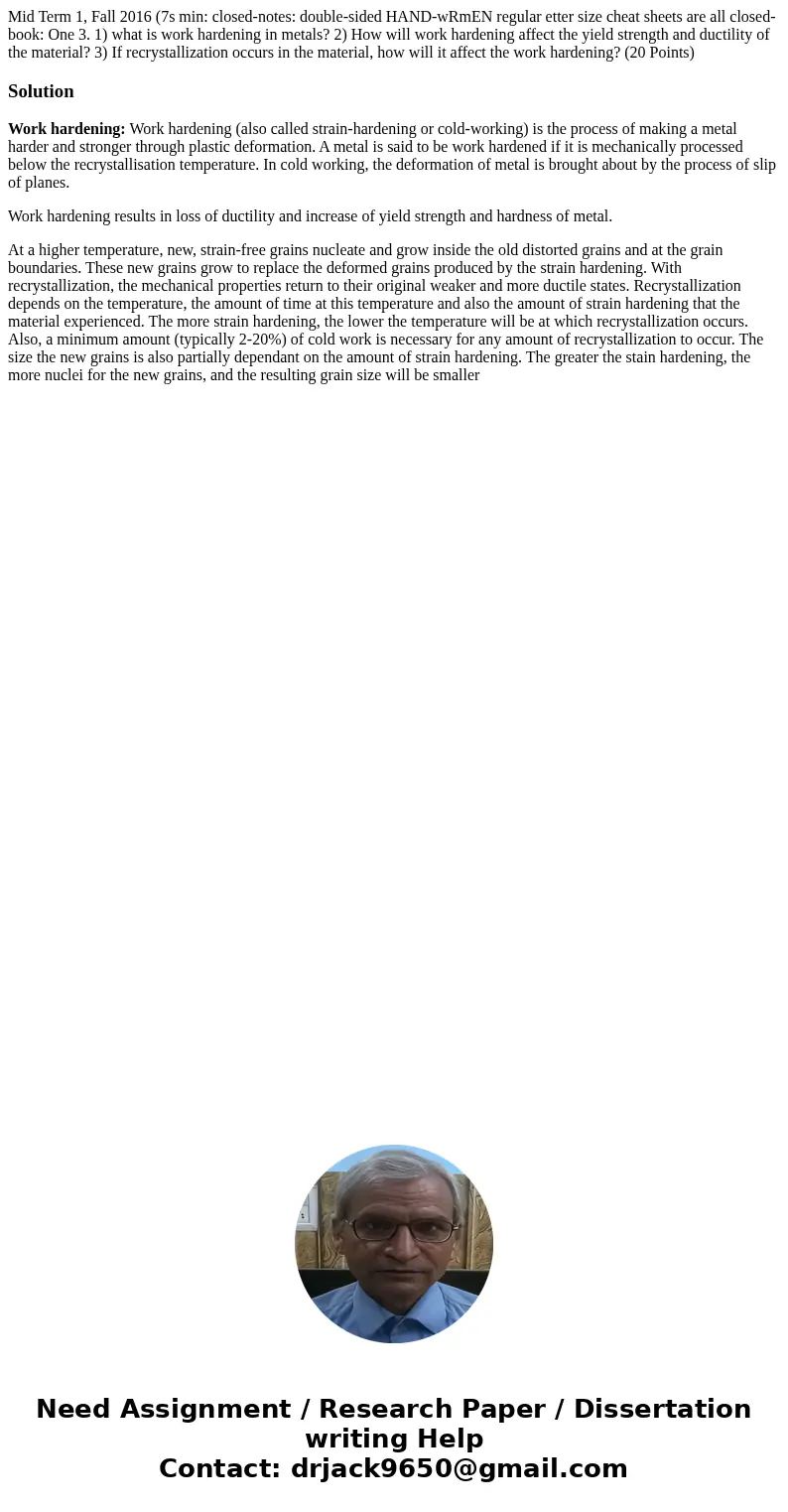Mid Term 1 Fall 2016 7s min closednotes doublesided HANDwRmE
Solution
Work hardening: Work hardening (also called strain-hardening or cold-working) is the process of making a metal harder and stronger through plastic deformation. A metal is said to be work hardened if it is mechanically processed below the recrystallisation temperature. In cold working, the deformation of metal is brought about by the process of slip of planes.
Work hardening results in loss of ductility and increase of yield strength and hardness of metal.
At a higher temperature, new, strain-free grains nucleate and grow inside the old distorted grains and at the grain boundaries. These new grains grow to replace the deformed grains produced by the strain hardening. With recrystallization, the mechanical properties return to their original weaker and more ductile states. Recrystallization depends on the temperature, the amount of time at this temperature and also the amount of strain hardening that the material experienced. The more strain hardening, the lower the temperature will be at which recrystallization occurs. Also, a minimum amount (typically 2-20%) of cold work is necessary for any amount of recrystallization to occur. The size the new grains is also partially dependant on the amount of strain hardening. The greater the stain hardening, the more nuclei for the new grains, and the resulting grain size will be smaller

 Homework Sourse
Homework Sourse